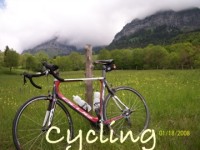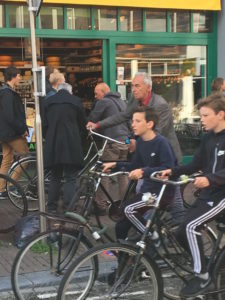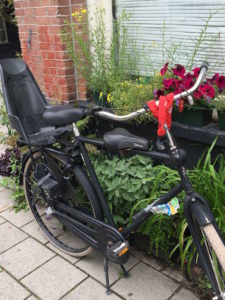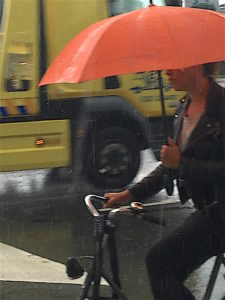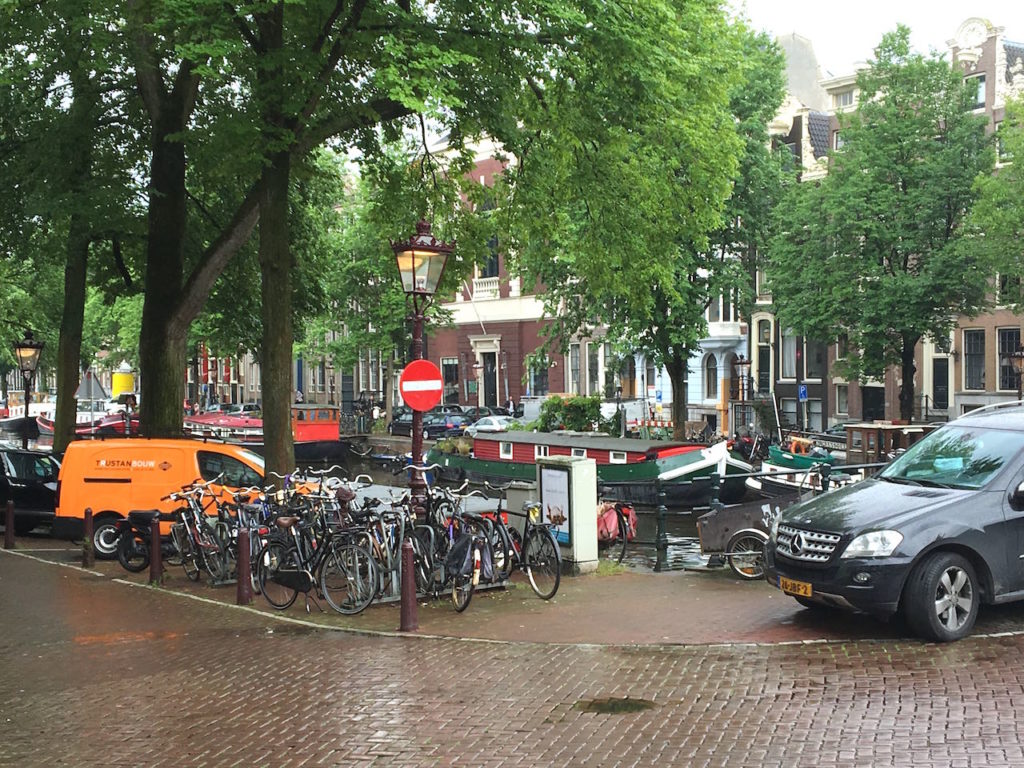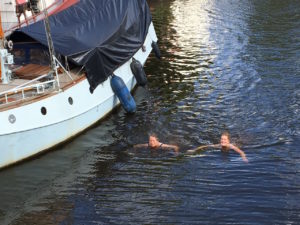Where are the traffic jams in Amsterdam? Amsterdam is the densest city in the European union, the financial capital of the Netherlands and part of an extended metropolis of 7 million people. Amsterdam proper has about 800,000 inhabitants—and 1.2 million bikes. There’s a good reason many people have more than one bike—the kid transport you use to take your two toddlers to daycare or haul groceries from the store may be a tough pedal to your corporate job in Centraal.
Amsterdammers do not ride expensive bikes. They ride heavy, durable work horse types, black, single-geared, with coaster brakes or hand brakes. Since 80,000 bikes are stolen each year, there’s little pride of possession and most residents use 2 locks to secure a bike. They also ride in the rain, cold, and wind, given Amsterdam’s English-style climate, and plain black bikes can be dirty or rusty without anyone caring too much.
It’s amazing how tiny a bike footprint is compared to a car’s. A bike with one or two occupants may cover 10 SF, whereas a compact car with 1 occupant will cover 50 SF. A bike leaves lots of room for others. Plus bikes are more nimble at intersections—the locus of most congestion—, meaning they can stack more densely and disperse more quickly.
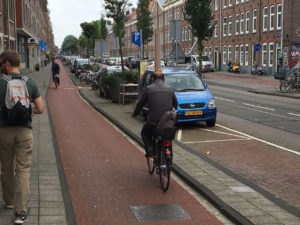
On main streets, pedestrian, bike and car paths are clearly defined. On minor streets, everyone shares, although bikes generally have the right of way.
This isn’t to suggest that car-driving in Amsterdam isn’t a frustrating experience. It must be, given the many road and right-of-way restrictions. It is just to say that a city that gives equal weight to pedestrians, cyclists, trams and cars, and is dense enough to keep trip distances short, does not experience congestion like cities that prioritize only cars. As a native Amsterdammer, Eva, said, “Why would I have a car when the streets are narrow and it’s hard to find a parking space and I can get everywhere on my bike?”
Remarkably, in our brief time in Amsterdam, we have seen no collisions or crashes. Bikes, walkers, trams, work vehicles and cars create a melee’ of activity on Amsterdam’s narrow streets and free-lancing the rules, especially by cyclists, is fairly common. Yet there appear to be few “incidents.” It took us four days to see a middle finger issued in response to road behavior—by a motor-vehicle driver, of course. This may be partly a tribute to Dutch tolerance and collectivism, but it seems to be mostly due to controlled speeds, alert action and agreement on the advantages of road-sharing.
Amsterdam has one more distinct advantage over a city like Atlanta: terrain. Amsterdam is generally listed as 1 m. below sea level, with the highest point in the city being about 17 m. above sea level, but in fact most of the city shows elevation differentials of no more than 4 m. That is FLAT! And it means anyone can ride a bike, and bike gearing is unnecessary for most situations.



